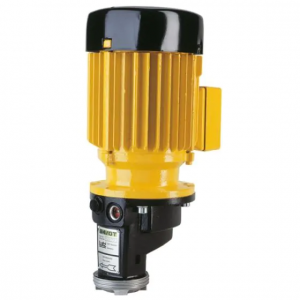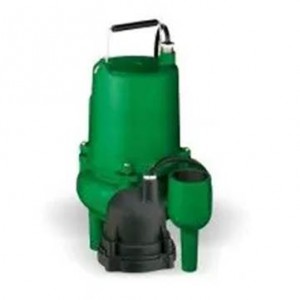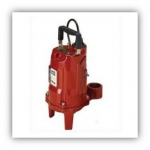Understanding Different Types of Chemical Pumps: A Comprehensive Guide
A chemical pump is used in various industries for safely transferring, loading, and managing chemicals. Different industries use chemical pumps depending on factors like the type of chemical, temperature, and corrosiveness. The most common industrial pumps are diaphragm, centrifugal, peristaltic, and gear pumps.
Let’s understand all these chemical pumps in detail.
Centrifugal Pumps
A centrifugal pump works by using a motor or an engine. This chemical pumpcan move the liquid using impeller blades and central force. The fluids are shifted due to the extensive rotational pressure of the centrifugal pump. It is usually used in high-volume pumping tasks as it does not need any wall suction near the liquid level. They are mostly used in the pharmaceutical, cosmetics, FMCG, and water treatment industries.
These offer multiple benefits, which are as follows:
- These have simple engineering.
- Centrifugal pumps are inexpensive compared to other pumps.
- These can handle liquid with a large amount of solids and can handle higher capacity.
These have some limitations, which are as follows:
- These are not self-priming.
- The shaft alignments are difficult to maintain.
- It may need regular maintenance checks if used in extensive settings.
Diaphragm Pumps
Diaphragm pumps are becoming popular in the chemical industry because, unlike centrifugal pumps, they can handle high-viscosity fluids. They work by dividing the pressure difference, which helps balance focus and transport fluids from one side. The food industry, which may include baby foods, chocolates, or materials with solids, works best with these pumps. Due to their high efficiency, these pumps excel at handling corrosive or abrasive chemicals.
The following are some advantages of this pump:
- These pumps offer high gas tightness, reducing the risk of leakage.
- The durable and easy design offers low maintenance and easy operation.
- These are highly effective for cleanliness, as the oil does not mix with the medium.
These are some limitations of diaphragm pumps:
- These can only handle low to medium flow rates.
- These may fail in high-pressure uses like waterjet cutting.
- There are no high-viscosity liquids as they struggle to pump such fluids. This can lead to resin or sewage sludge.
Peristaltic Pumps
These are also known as roller pumps. A peristaltic pump works on the principle of peristalsis. Peristaltic pumps offer amazing safety features, as only the hose or pump tube comes in contact with fluids. They use a compression of soft hose to transport the fluid. A vacuum is created as the rollers rotate, which is used for the fluid.
Due to their precise abilities, these are preferred for metering applications. This chemical pump is very popular in the chemical industry and is used for dyes, fertilizers, glues, and detergents.
The following are the advantages of these pumps:
- These pumps are suitable for non-contaminated material production.
- Cost-effective compared to other machinery, as operation uses minimal energy.
- The engineering is very minimal, making them easy to sterilize.
The following are the limitations of these pumps:
- The life of the tubes in these pumps is limited.
- The owner needs industry expertise to operate these pumps.
- Sometimes, selecting the optimal tube for the required purpose can be difficult.
Gear Pumps
Gear pumps work by frequently opening and closing interlocking cogs, also called gears. This helps deliver a pulse-free flow similar to the rotational speed of gears. Gear pumpsare best suited for the chemical industry because they have consistent flow rates and precise metering. They are most popular for laboratory reactors, fluid power systems, paints, soaps, and plastic.
The following are the advantages of these pumps:
- These offer low cost and are easy to transport due to low weight.
- The gear pump is easy to use and maintain as it has a simple structure and few components.
- It can easily handle fluid density and viscosity due to discharge ports.
The following are the limitations of these pumps:
- The gear pump parts are not easy to repair after wear due to their poor interchangeable nature.
- These generate large noise due to radical force and large flow arteries.
- The displacement in the pumps is unadjustable.
Progressing Cavity Pumps
These pumps use a mechanism in which the rotor creates a temporary chamber. This helps to draw fluid into the pump and release it through a discharge port.
The following are the advantages of these pumps:
- These are self-priming and can handle solids.
- These are perfect for high and low-viscosity applications.
- It offers a smooth and gentle low-pulsation flow.
The following are the limitations of these pumps:
- The slippage rates in this pump can be high due to the rotator.
- This chemical pump needs a fluid film for sliding surface lubrication.
- These pumps cannot work in a run-dry situation.
Choosing the Right Pump for Your Application
While selecting a chemical pump, you should analyze the chemical compatibility and flow rate requirements. Gear or peristaltic pumps are the best if you want a pump with good material viscosity and a compact size that fits operational conditions. Additionally, you can install a centrifugal pump in the pharmaceutical or adhesive industry.
Check out the best chemical pumps atpump products for industry-grade materials. Get your chemical pump today.














